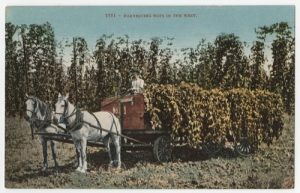CDL receives additional LSTA grant funding to expose more cultural heritage collections through Calisphere and DPLA

CDL is pleased to announce that we have received an additional year of grant support from the California State Library, enabling us to aggregate and provide even more comprehensive access to unique digital resources from cultural heritage organizations throughout the state.
“Harvesting California’s Bounty” is an initiative supported by the US Institute of Museum and Library Services under the provisions of the Library Services and Technology Act (LSTA), administered in California by the State Librarian.
The goal of the initiative is to bring together digital collections that are otherwise dispersed across a range of library, archive, and museum systems. Although these collections are available online through local websites, they are often not readily discoverable. Through harvesting, aggregating, and displaying the collections on Calisphere and the Digital Public Library of America websites (DPLA), CDL provides the collections with increased visibility and usability. Given that a number of them were created with the support of LSTA funding, it is all the more important that they remain publicly available, findable, and usable for the long term.
With another year of grant support (October 2018-September 2019) the CDL will have staffing capacity to focus on harvesting additional collections from organizations in California, with an emphasis on working with public libraries. We anticipate harvesting a number of new resources, ranging from a broad array of historical materials digitized through the California Revealed initiative, the Los Angeles Public Library’s Travel Posters Collection and Menu Collection, important material from the CSU Fresno Armenian Studies program, and a host of potential new local history collections from across the state that are being managed using the PastPerfect museum collection management software.
Building on previous grant phases, the breadth and depth of publicly-available research collections available from California cultural heritage organizations through Calisphere continue to grow at a fast clip, and now represent one of the largest subsets of content in DPLA.
